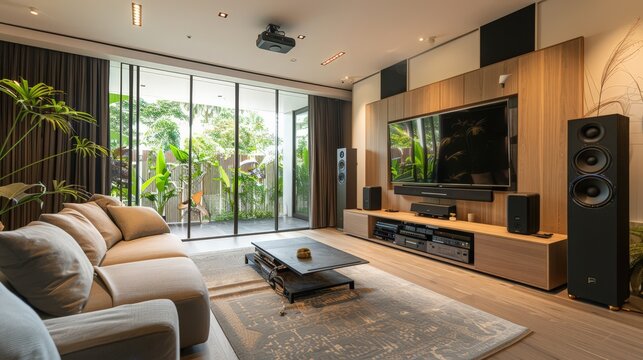
Stereo System Speakers: The Heart of Your Audio Experience
Stereo system speakers are the cornerstone of any high-quality sound setup. Whether you are a casual listener, an audiophile, or someone who enjoys a good home theater experience, speakers are essential in translating the signals from your music, movies, or games into tangible, rich sound that fills your space. From small bookshelf speakers to large tower speakers, home audio systems come in various forms to suit diverse needs and preferences.
What Are Stereo System Speakers?
At their core, stereo system speakers are devices that take electrical signals and convert them into sound. They are typically part of a two-speaker setup (left and right) designed to reproduce sound in a way that creates depth and spatial awareness, enhancing the auditory experience. These speakers usually include multiple drivers (components responsible for producing different sound frequencies), such as woofers for bass and tweeters for treble.
Types of Stereo System Speakers
Stereo system speakers come in a variety of shapes and sizes, each offering distinct advantages and sound qualities. Below are some of the common types:
- Bookshelf Speakers: Compact yet powerful, bookshelf speakers are perfect for smaller spaces or when you need a more discreet setup. These speakers often deliver surprisingly robust sound despite their size and are popular among audiophiles who prioritize sound quality without taking up much space.
- Floor-standing Speakers (Tower Speakers): Larger and more powerful, tower speakers are designed for larger rooms where deeper bass and louder sound are needed. These speakers typically include multiple drivers in one enclosure to handle the full frequency range and deliver an immersive listening experience. Ideal for home theaters or music enthusiasts, tower speakers are a staple in many high-end audio setups.
- Satellite Speakers: Smaller speakers used in surround sound systems, satellite speakers can be placed around a room to create an immersive listening experience. While they often lack the full-range sound of larger speakers, they are designed to complement subwoofers and other speakers in a multi-channel system.
- Subwoofers: While not part of the traditional “stereo” system, subwoofers are crucial in enhancing the low-end of the sound spectrum. They reproduce deep bass and low frequencies, adding fullness and richness to music, movies, and games. Subwoofers are essential for users looking for powerful, room-shaking sound.
- In-Wall and In-Ceiling Speakers: For those looking for a clean, unobtrusive setup, in-wall or in-ceiling speakers are a great choice. These speakers are designed to be installed directly into walls or ceilings, blending seamlessly into the room’s architecture while still delivering high-quality sound.
Factors to Consider When Choosing Stereo System Speakers
Selecting the right speakers for your setup requires careful consideration of several factors:
- Room Size: The size of your room plays a significant role in choosing the right speakers. Small rooms may benefit from bookshelf speakers, which can deliver clear sound without overwhelming the space, while larger rooms may require floor-standing speakers to fill the space with rich, full-range sound.
- Power Handling: Different speakers have different power handling capacities. Make sure your speakers are compatible with the power output of your stereo receiver or amplifier. Overpowering speakers can cause damage, while underpowering them can lead to distortion and poor performance.
- Impedance: Impedance is a measure of how much resistance a speaker provides to the electrical current from the amplifier. It’s important to match the impedance of the speakers with the output impedance of your amplifier to ensure compatibility and prevent damage.
- Frequency Response: The frequency response of a speaker refers to the range of sound frequencies it can reproduce. A wide frequency response ensures that you get accurate, full-spectrum sound. Pay attention to the range to ensure that the speakers can produce both low and high frequencies clearly.
- Sensitivity: Speaker sensitivity refers to how efficiently a speaker converts power into sound. Higher sensitivity speakers require less power to produce the same volume as lower sensitivity speakers. This is an important consideration if you’re using a lower-power amplifier.
- Sound Quality and Personal Preference: Ultimately, sound quality is subjective. Some people may prefer speakers with a more bass-heavy sound, while others may prioritize clarity and detail in the mids and highs. It’s best to listen to various models in person, if possible, to find the sound signature that appeals most to your ears.